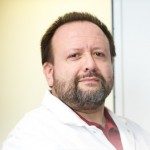Link to Pubmed [PMID] – 16103911
PLoS Genet 2005 Jul; 1(1): 36-57
Recent sequencing and assembly of the genome for the fungal pathogen Candida albicans used simple automated procedures for the identification of putative genes. We have reviewed the entire assembly, both by hand and with additional bioinformatic resources, to accurately map and describe 6,354 genes and to identify 246 genes whose original database entries contained sequencing errors (or possibly mutations) that affect their reading frame. Comparison with other fungal genomes permitted the identification of numerous fungus-specific genes that might be targeted for antifungal therapy. We also observed that, compared to other fungi, the protein-coding sequences in the C. albicans genome are especially rich in short sequence repeats. Finally, our improved annotation permitted a detailed analysis of several multigene families, and comparative genomic studies showed that C. albicans has a far greater catabolic range, encoding respiratory Complex 1, several novel oxidoreductases and ketone body degrading enzymes, malonyl-CoA and enoyl-CoA carriers, several novel amino acid degrading enzymes, a variety of secreted catabolic lipases and proteases, and numerous transporters to assimilate the resulting nutrients. The results of these efforts will ensure that the Candida research community has uniform and comprehensive genomic information for medical research as well as for future diagnostic and therapeutic applications.




